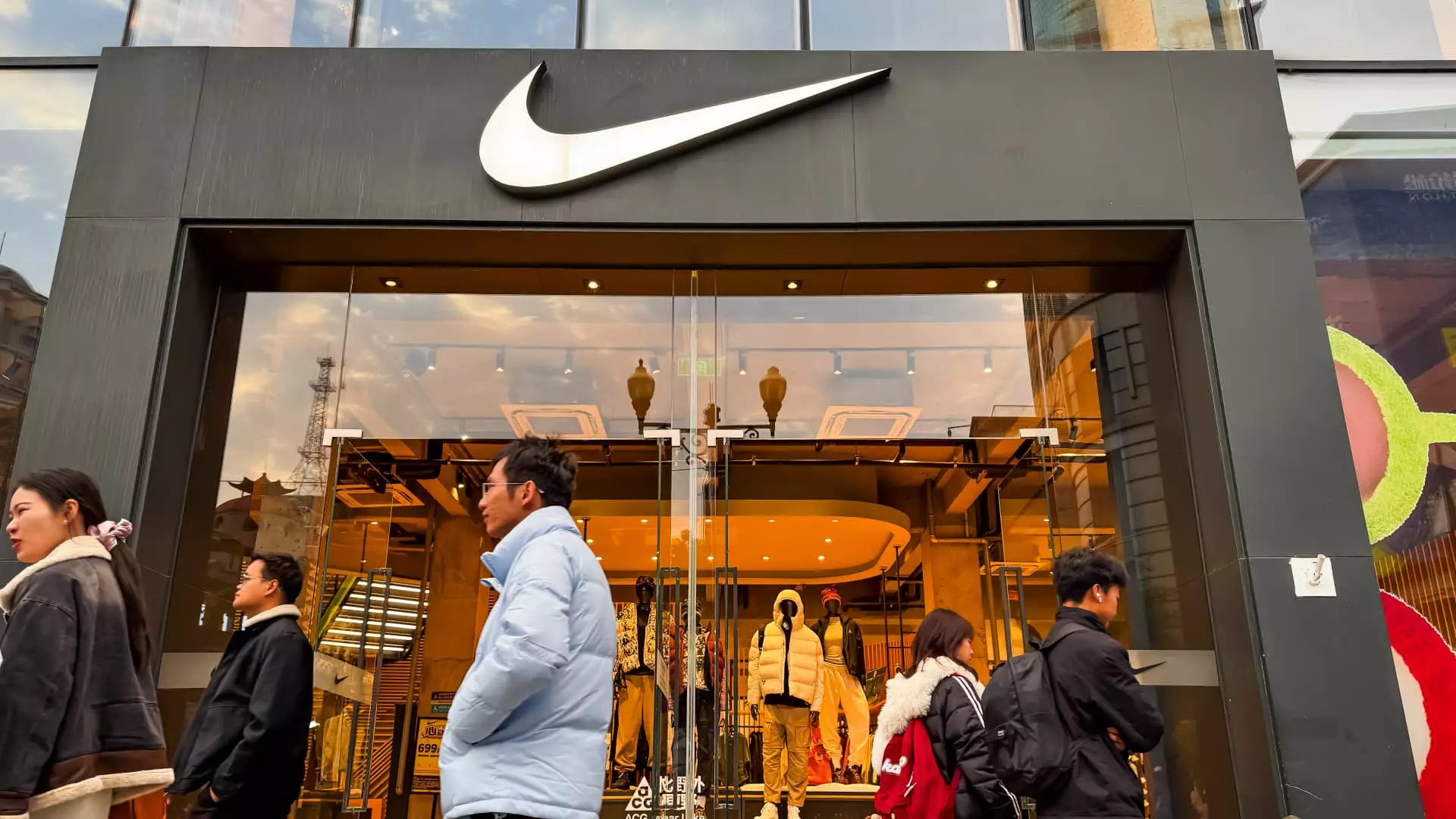Nike, a titan in the athletic footwear market, shattered expectations just when analysts thought they had the brand figured out. The company’s alarming announcement of a projected double-digit sales decline for the current quarter paints a bleak picture of a turnaround process that is painfully sluggish. In a world increasingly dependent on quick and efficient responses, Nike’s delays can be likened to a ship stuck in the doldrums, at the mercy of external economic winds and their own internal inefficiencies. With finance chief Matt Friend stating that the revenue drop would land at the low end of the “mid-teens range,” it’s hard to ignore the gravity of the challenges facing the brand.
While one could argue that this downturn is due to a tangled web of reasonings—including tariffs, fluctuating consumer confidence, and changing market dynamics—the faltering performance adds pressure on Nike’s leadership. Recent earnings show a net income drop of 32% compared to last year, clearly indicating that the previously dominating brand is not just losing its shine but is at risk of losing its competitive edge altogether.
Adapting to a Changing Landscape
The retail landscape is a relentless battlefield where complacency can lead to defeat. Nike’s troubles are a direct result of not adapting swiftly enough to rapidly evolving consumer preferences and economic conditions. It’s incomprehensible that they would miscalculate the impact of the newly imposed tariffs and take so long to clear outdated inventory. In a market where consumer loyalties can change overnight, waiting and hoping for conditions to improve is a perilous strategy.
The company’s decision to focus on clearing out old inventory highlights a flawed approach. Instead of innovating and appealing to modern tastes, they seem to be playing catch-up with trends that had long passed. While it is true that their fiscal third-quarter earnings beat analyst expectations, this theatrical display is overshadowed by a dramatic drop in consumer sentiment and the increasing vulnerability of their core products. The time for a decisive pivot is now, not later.
Consumer Confidence: The Ultimate Indicator
A telling factor in Nike’s current struggles is the declining consumer confidence, which poses an existential threat to the brand’s revenue streams. As discretionary spending shrinks, consumers shove luxury purchases — including fashionable sneakers and clothing — down the priority list. When people are nervous about their finances, the appeal of high-end athletic shoes dims dramatically. Consequently, this crisis does not merely reside within Nike; it reflects broader economic uncertainties that include fluctuating retail sales and geopolitical tensions.
The true challenge lies in the perception of value. Nike must convince a skeptical population that their products not only meet needs but exceed expectations. That isn’t a small task; it requires a multifaceted approach including innovative designs, an eye toward sustainability, and the ability to connect with younger consumers who prioritize authenticity.
Strategic Partnerships and Innovation
To combat its current vulnerabilities, Nike is striving to woo back not just consumers but also wholesale partners, and it appears some strategic partnerships are already in the works. The collaboration with Kim Kardashian’s brand, Skims, is certainly promising, as it allows Nike to tap into a demographic that it has historically under-appealed to. In merging high fashion with athletic wear, Nike stands a chance to refresh its image in an increasingly competitive field.
Moreover, reengaging with female athletes and portraying them as central figures in their major campaigns can only enhance market outreach. This newfound commitment could align them more closely with brands like Lululemon that have successfully carved a niche among women. Nevertheless, all the partnerships and advertising gimmicks rest on the foundation of genuine product innovation. If Nike’s product pipeline fails to produce wow-factor items, all the marketing in the world will not yield sustained financial improvement.
The Road Ahead: A Call to Arms
The pressure to perform is mounting as consumers become increasingly discerning. Nike’s immediate path forward should be less about avoiding risk and more about embracing audacity. A cavalier approach to managing the unexpected will only prolong the inevitable decline if they do not adapt quickly and decisively. Cutting through the noise requires fresh thinking that places the consumer at the forefront.
Nike’s history teaches us that resilience can lead to transformation, but this resilience must now come from a willingness to overhaul not just product lines but also the underlying ethos of the brand. Clinging desperately to past glories while ignoring foundational shifts in the market could spell disaster unless bold, calculated changes are implemented without delay. The athletic wear giant finds itself at a crossroads—the time for indecision is past; it must act now to secure its future.

